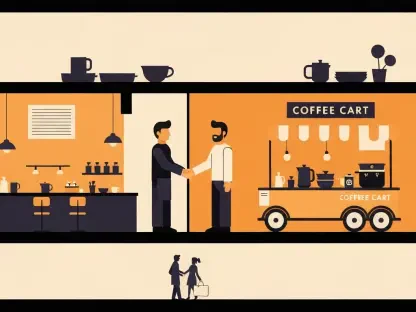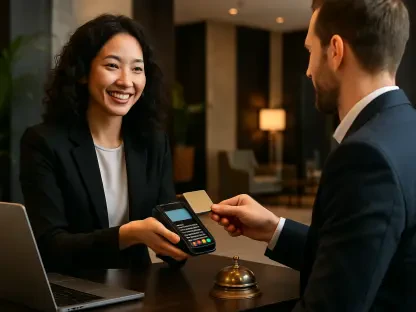In the bustling landscape of the UK events industry, a staggering reality emerges: millions of potential attendees with disabilities often face significant barriers to participation, limiting their engagement. From inaccessible venues to inadequate communication tools, the sector has long grappled with ensuring equitable experiences for all, which also hampers the industry’s broader mission of fostering connection and community. The Meetings Industry Association (MIA), a leading body representing the UK events sector, has stepped forward with a transformative initiative to address these gaps, setting a new standard for inclusivity.
The MIA, known for advocating best practices and driving innovation among event professionals, venues, and suppliers, serves as a pivotal force in shaping industry standards. With a membership spanning diverse stakeholders, the association has consistently pushed for advancements that elevate the quality and reach of events across the nation. Its latest effort focuses on accessibility, a critical area where progress is both urgently needed and profoundly impactful, aiming to reshape how events are planned and executed.
This initiative arrives at a time when the industry is witnessing growing demand for inclusive practices, spurred by both societal shifts and legal mandates. As event organizers strive to meet these expectations, the need for clear, actionable guidance has never been more apparent. The MIA’s response to this pressing issue promises to redefine accessibility as a cornerstone of event planning, ensuring that no one is left behind in experiencing the transformative power of gatherings.
Detailed Analysis of the Accessibility Guide and Industry Trends
Core Components and Practical Applications
The centerpiece of the MIA’s initiative is a comprehensive resource launched in alignment with Purple Tuesday, a global movement dedicated to improving accessibility for disabled individuals. This guide, developed in collaboration with diversity consultant Gabrielle Austen-Browne and Diversity Alliance, offers a detailed roadmap for event organizers, venues, and suppliers. It targets the removal of physical and systemic barriers, ensuring that delegates, speakers, and staff with disabilities can fully participate in events without hindrance.
Key areas addressed in the resource include venue design considerations, such as ramps and seating arrangements, alongside communication strategies like sign language interpretation and accessible digital content. Additionally, the guide emphasizes staff training to build awareness and capability in handling diverse attendee needs. Practical tools, including checklists and real-world case studies, provide event professionals with tangible steps to implement changes effectively, bridging the gap between intent and action.
Current trends in the industry indicate a rising awareness of accessibility needs, with data suggesting that over 20% of the UK population lives with some form of disability. This statistic underscores the urgency for actionable solutions, as events that fail to accommodate diverse needs risk alienating a significant portion of their audience. Forecasts suggest that by integrating such resources, the sector could see a marked increase in attendance and engagement over the next few years, from 2025 to 2027, as inclusivity becomes a competitive differentiator.
Legal Frameworks and Compliance Insights
A critical aspect of the guide is its alignment with the Equality Act 2010, which mandates reasonable adjustments for individuals with physical or mental impairments. This legal framework requires event professionals to proactively address accessibility, ensuring that no one is discriminated against due to disability. The MIA’s resource breaks down these obligations into clear, manageable steps, helping stakeholders navigate compliance without feeling overwhelmed by legal jargon or requirements.
Beyond mere adherence to law, the guide positions compliance as an opportunity to build trust and reputation within the industry. Venues and organizers that prioritize accessibility often report higher satisfaction rates among attendees, as well as positive feedback that enhances brand loyalty. As legal scrutiny around inclusivity intensifies, experts predict that non-compliance could lead to reputational risks and financial penalties, making resources like this guide indispensable for long-term success.
Broader Implications and Industry Benefits
Accessibility transcends legal necessity, emerging as a fundamental value that enriches the entire events ecosystem. MIA Chief Executive Shonali Devereaux has articulated that inclusivity lies at the heart of creating meaningful connections, a core mission of the industry. When events are designed with accessibility in mind, they foster environments where every participant can engage fully, leading to more vibrant and impactful experiences.
Moreover, accessible events benefit not only those with disabilities but all attendees by promoting universal design principles. Features like clear signage, spacious layouts, and diverse communication options enhance usability for everyone, from parents with strollers to older adults. Industry analysis suggests that embracing such practices could drive innovation, with accessible events setting new benchmarks for quality and attendee satisfaction in the coming years.
Transformative Approaches to Inclusive Planning
Gabrielle Austen-Browne introduces a compelling framework called Access for All, which advocates embedding accessibility into the earliest stages of event planning. This approach challenges the common practice of treating inclusivity as an afterthought, instead urging professionals to consider diverse needs from the outset. By doing so, events can avoid costly retrofits and ensure a seamless experience for all participants.
Her perspective highlights a critical oversight in the industry: neglecting accessibility diminishes the overall event quality for everyone, not just those with disabilities. Austen-Browne argues that early integration of inclusive practices can elevate engagement, as attendees feel valued and considered in the design process. This shift in mindset, supported by the MIA’s guide, is poised to transform how events are conceptualized, potentially setting a new industry standard over the next decade.
Challenges and Strategic Opportunities
Despite the clear benefits, implementing accessibility measures often faces significant hurdles within the events sector. Common barriers include a lack of awareness among professionals about specific needs, as well as limited budgets that constrain investment in infrastructure or training. Logistical challenges, such as retrofitting older venues, further complicate efforts to create fully inclusive environments.
However, these obstacles also present opportunities for innovation and collaboration. The MIA’s guide serves as a practical solution, offering low-cost strategies and phased approaches to accessibility that can fit within tight budgets. Partnerships with accessibility-focused organizations and leveraging government grants for compliance can also ease financial burdens, turning challenges into catalysts for positive change.
Industry forecasts indicate that overcoming these barriers could unlock substantial growth, with accessible events likely to attract broader demographics and increase market share. As consumer expectations evolve, stakeholders who invest in inclusivity now are expected to gain a competitive edge, positioning themselves as leaders in a more equitable events landscape by 2027.
Reflections and Path Forward
Looking back, the launch of the MIA’s accessibility guide marked a pivotal moment for the UK events industry, shining a light on the urgent need for inclusive practices. The collaboration with experts like Gabrielle Austen-Browne and the alignment with initiatives like Purple Tuesday underscored a collective commitment to dismantling barriers. The detailed strategies and legal insights provided in the resource laid a strong foundation for change, sparking conversations about the deeper value of accessibility.
Moving forward, the industry must prioritize sustained action by integrating the guide’s recommendations into everyday operations. Event professionals are encouraged to view accessibility not as a checkbox but as a continuous journey of improvement, seeking feedback from attendees to refine their approaches. Exploring technological innovations, such as virtual accessibility tools, could further enhance inclusivity, ensuring events remain adaptable to diverse needs.
Ultimately, the legacy of this initiative hinges on collective effort and accountability. Stakeholders across the sector should commit to regular training and audits to maintain high standards, while advocating for policy changes that support accessibility funding. By fostering a culture of inclusion, the UK events industry can build a future where every gathering truly welcomes all, creating lasting impact beyond compliance alone.









